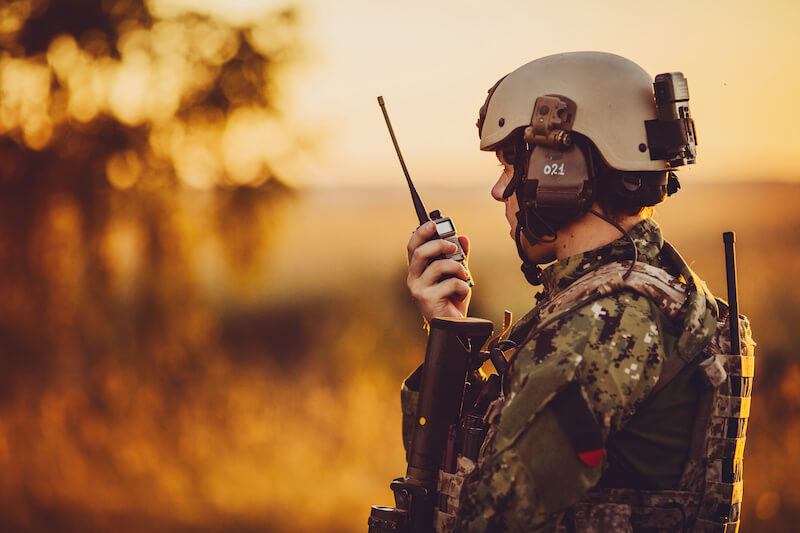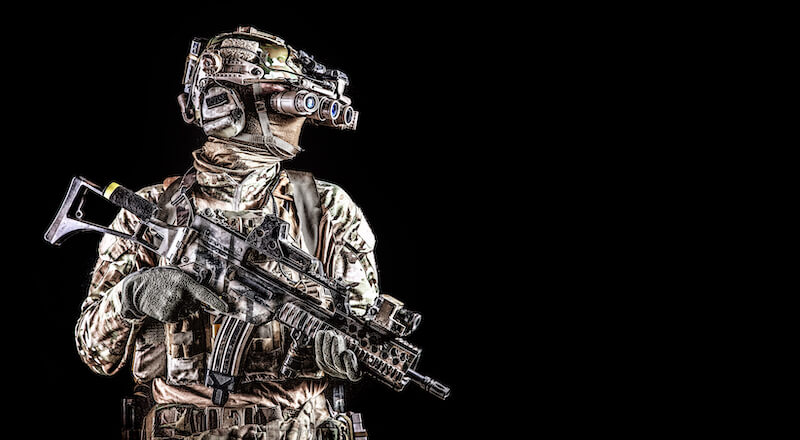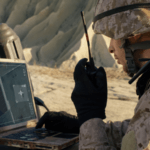One of the greatest challenges faced by military commanders is that of communications. Clear and concise exchange of information has always been vital to any successful military operation, and none more so than in modern times.

Effective command and control have always been at the heart of leadership. Even during pre-industrial times, when commanders could often survey an entire battlefield from a single vantage point, ensuring that orders were relayed quickly and accurately was difficult.
The early 20th Century saw the rapid mechanization of all aspects of warfare. The replacement of horsepower with internal combustion engines, along with more effective weaponry, created major changes on the battlefield. No longer would soldiers fight shoulder-to-shoulder, and commanders could no longer depend on being able to view the action first-hand. With these developments, an effective communication system became even more vital.
In the modern era, the military depends on a concept called combined operations. This sees all elements of the armed forces working in close cooperation, from the soldiers on the ground and their support services to close support aircraft and even naval forces. Not only do these forces rely on clear and secure voice communications, but they also now depend on shared data services, creating an information network in which all elements have access to vital intelligence.
Military Communications and The Digital Battlefield
The battlefield environment is challenging. Any equipment that is intended for use on the battlefield must be designed to function in some of the harshest conditions, none more than systems designed for the infantry. Over the last decades, many militaries have developed their version of the “future soldier” concept, in which the infantry soldier is equipped with a range of communications and data technology.

Central to this concept is wearable technology, which will allow the soldier to operate in a digitally connected environment. These connected devices, a combination of vision, data and voice, must work in the tough conditions found in the field. At the same time, they must also provide a very high level of reliability, for there is a real possibility that lives will depend on them.
The connectors used in the latest battlefield communications systems must be able to resist exposure to the elements, as well as shock and vibration. Samtec has created a full family of connectors that provide solutions for these demanding applications, from the personal radio worn by soldiers to sophisticated tactical networks.
Connecting In The Toughest Conditions
Designed to provide the high performance that designers expect from Samtec connectors, these products have been subjected to a battery of tests that prove their suitability for the harsh environments found on the battlefield. The Severe Environment Testing (SET) program has created a range of connectors that are ready for the demands of the military, whilst delivering the high data rates and signal integrity needed for the latest information technology.

To find out more about how Samtec products are ready for high performance military and aerospace needs, visit the industrial applications page. To learn more about how the SET program is providing designers with certified products for harsh environments, visit the SET page.


[…] Clear and concise communication is the backbone of military operations. In the heat of combat, amidst chaos and uncertainty, the ability to convey orders, information, and intelligence swiftly and accurately is paramount. Whether it’s issuing commands to troops on the ground, coordinating airstrikes, or relaying situational updates, clarity in communication can mean life or death. […]